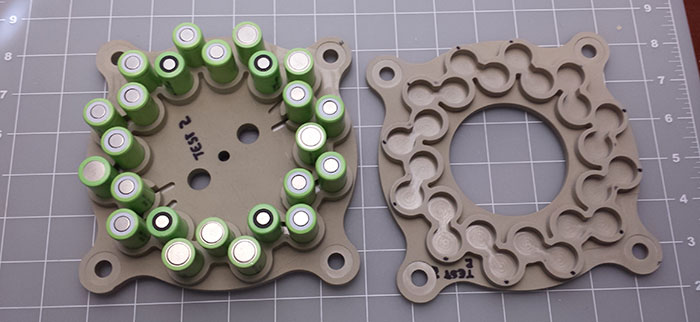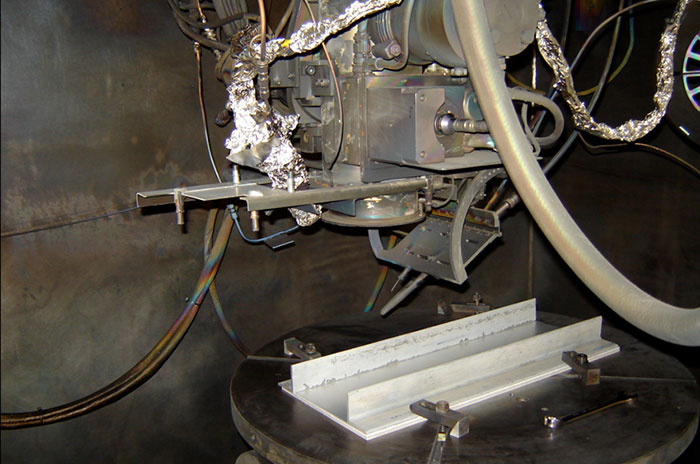“We’re not driving the additive manufacturing train, industry is, but NASA has the ability to get on-board to leverage it for our unique needs.” So said Ted Swanson recently, who is the assistant chief for technology for the Mechanical Systems Division at NASA’s Goddard Space Flight Center in Greenbelt, MD and NASA’s central point-of-contact for additive manufacturing, which is led by NASA’s Space Technology Mission Directorate.
NASA is part of the US government’s synergistic investments in additive manufacturing (3D printing) that includes: the U.S. Air Force; U.S. Department of Energy (DOE); National Institute of Standards and Technology (NIST); and National Science Foundation (NSF), catalysed by America Makes (formerly the National Additive Manufacturing Innovation Institute), which is a public-private partnership created to drive 3D printing into into mainstream US manufacturing.
America Makes in turn is a part of the U.S. National Manufacturing Initiative, a strategic project that aims to renew manufacturing as a key core sector in the world’s current largest single economy: An economy that already lies slightly behind the European Union and is forecast to be surpassed by the Peoples Republic of China this decade. Revitalising manufacturing in the USA has arguably never been so critical for the world’s most powerful Nation State.
Matt Showalter, who is overseeing Goddard’s disparate 3D printing efforts stated: “This effort really goes beyond one centre. It’s in the national interest to collaborate with other institutions. This is a powerful tool and we need to look at how we can implement it. For us, it’s a team effort.”

LaNetra Tate, the advanced-manufacturing principal investigator for the Space Technology Mission Directorate’s Game Changing Development Program recently explained: “NASA’s work with additive manufacturing should enable us to be smart buyers and help us save time, expense and mass. With additive manufacturing, we have an opportunity to push the envelope on how this technology might be used in zero gravity — how we might ultimately manufacture in space.”
As this author is certainly no fan of warfare, the scientific endeavour of NASA presents a complementary challenge to pure military expenditure as a catalyst for accelerating technological progression. This adds further pertinence to NASA’s interest in 3D printing, even beyond the phenomenal potential of mankind’s future in space as our species liberates itself from our ecologically strained home world and ventures boldly into the final frontier.
The majority of NASA centres have begun applying additive manufacturing to a variety of applications that are pertinent to their areas of world-leading expertise.
For example a team at the NASA Langley Research Center (LaRC) has developed a 3D printing process called the Electron Beam Freeform Fabrication (EBF3).

EBF3 uses an electron-beam gun, a dual-wire feed and computer controls to remotely manufacture metallic structures for building parts or tools in a remarkably short time — just hours, in fact. This additive manufacturing process was primarily developed and engineered by Karen Taminger, a material research engineer for NASA LaRC. NASA-patented, EBF3 is a process designed to build complex, near-net-shape parts requiring substantially less raw material and finish machining than traditional manufacturing (or other AM) methods.
There is a history of over a decade of successful collaboration with other NASA centres, Federal agencies and the US aerospace industry. EBF3 is a process by which NASA plans to build metal parts in zero gravity environments. The efficiencies of the electron beam and the feedstock make EBF3 attractive for in-space use. EBF3 works in a vacuum chamber, where an electron beam is focused on a constantly feeding source of metal, which is melted and then applied — one layer at a time — on top of a rotating surface until the part is complete. EBF3 can process two different sources of metal feed stock at the same time, either by mixing them together into a unique alloy or embedding one material inside another.
Components
NASA’s Glenn Research Centre in Cleveland recently collaborated with Aerojet Rocketdyne of West Palm Beach, FL, to fabricate and successfully test an engine injector for the RL-10 rocket. NASA’s Marshall Space Flight Center in Huntsville, AL, has used 3D printing to create components for the J-2X and RS-25 (also known as the Space Shuttle Main Engine) liquid-fuel cryogenic rocket engine. Both are planned for use on NASA’s Space Launch System, the successor to the space shuttle that we all know and miss so dearly.
The Marshall Space flight center also is working with Made In Space, a Silicon Valley start-up, to develop a 3D printer that astronauts will use on the International Space Station later this year. As previously covered in 3D Printing And Space (Part 2): Made In Space, astronauts will create tools and replacement parts they need to operate in space, eliminating the need for transport. It’s a little like Star Trek, only light years away from the fictional technology, back in the realm of reality, today: the logistical principle however is indeed analogous to the Star Trek Replicator.
The next instalment in this series — Part 4 — will be covering Moon-bases, Mars-bases and the potential of 3D printing and bioprinting for terraforming. I have a few contacts at NASA who I will be approaching for interviews in the near future too, so keep your eye’s peeled on this space to keep your finger on the pulse of the excitement!


